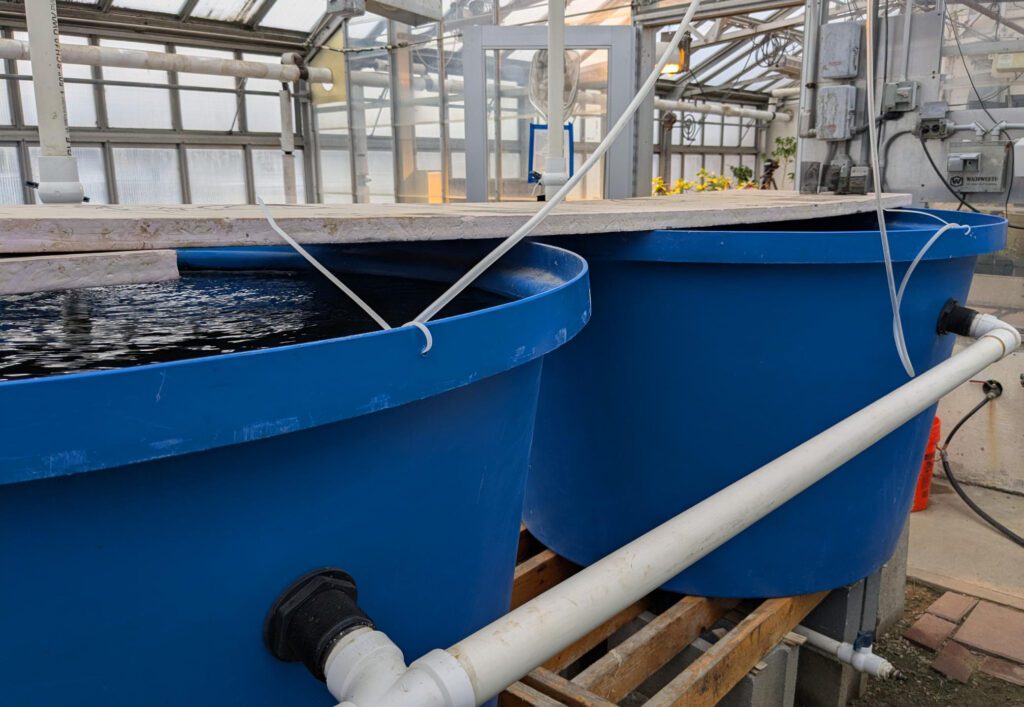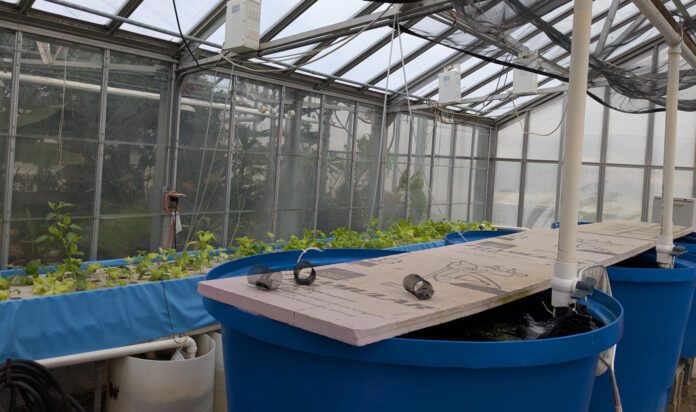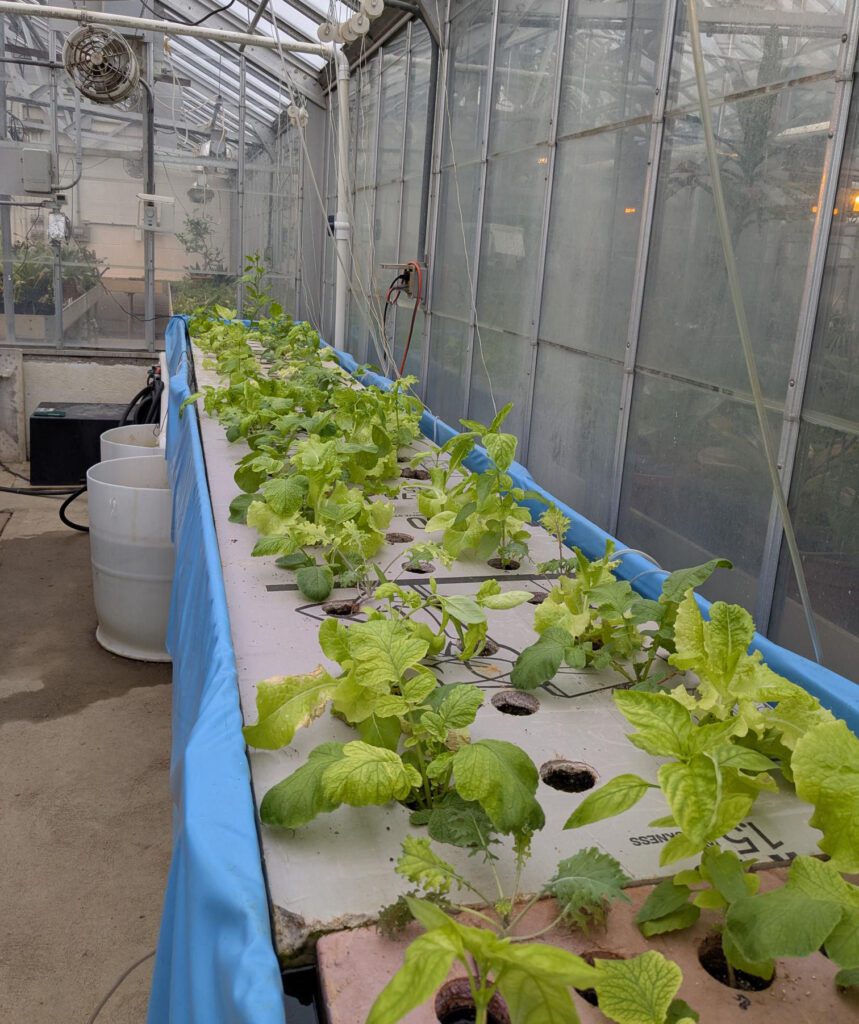
BOWLING GREEN – Bowling Green has seen a surge in aquaponics development as a result of efforts from the Bowling Green State University (BGSU) aquaponics program and AGP Substrates LLC.
Aquaponics is a way to produce food using hydroponics (growing plants with water rather than soil) and aquaculture (raising organisms in a controlled area), creating a mostly self-sufficient ecosystem where both the produce and organisms can be harvested for human consumption.
Aquaponics is emerging as a way to create healthy and sustainable living, something that is important to 65 percent of consumers, according to the World Economic Forum.
Unlike aquaponics, traditional commercial farming often produces foods sprayed with pesticides, which can have adverse health effects.
More than 50 percent of foods tested by the Food and Drug Administration (FDA), both imported and grown in the U.S., have detectable levels of pesticides, according to the Environmental Working Group (EWG).
Aquaponics uses no pesticides, medications or antibiotics, according to Kevin Neves, a BGSU associate teaching professor and developer of BGSU’s aquaponics program, which has been operating for the past seven years.
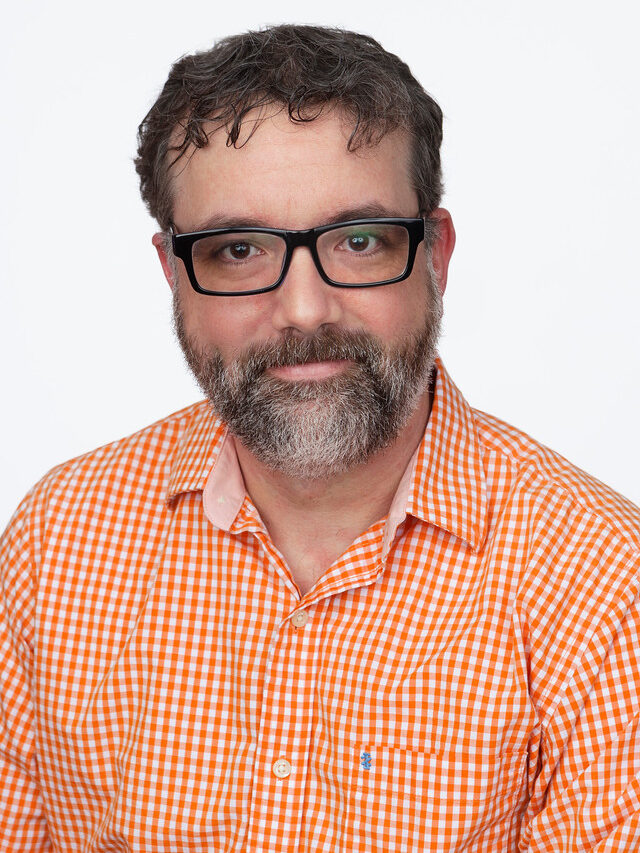
Despite the process for growing being different, Neves said when studies were conducted at BGSU, students thought the aquaponics-grown food was just as good, if not better, when compared to other foods.
The systems at BGSU have produced tomatoes, lettuce, radishes, basil and kale with water and nutrients from tanks containing yellow perch and crayfish, respectively. Largemouth bass are forthcoming to the system.
The program began after Neves was hired because of his background working with marine aquaponics. While marine aquaponics uses saltwater, the system at BGSU uses freshwater, which Neves said is more cost-effective.
Most of the water used in aquaponics is recyclable, and in some cases requires only 10 percent of the water used in traditional crop-production farming, making aquaponics a more sustainable production method, according to the Agricultural Marketing Resource Center (AGMRC).
Though the AGMRC reports that aquaponics can be time and labor-intensive, Neves said aquaponics is low maintenance and mainly consists of cleaning tanks and monitoring the water’s iron levels. Since BGSU uses aquaponics to collect data, Neves said they do more maintenance than is required of the average person.
“If this was in your backyard, it would probably be less than 20 minutes a day,” Neves said. “It’s very easily adoptable for your everyday person or someone who’s looking to get into growing their own food.”

As part of an initiative to make aquaponics more accessible and sustainable, entrepreneur Cori Byrge founded AGP Substrates LLC.
“I wanted to help people access fresh and sustainable and organic food. Our mission is to improve that accessibility of organic food that’s nutrient-rich and local by empowering people to do it at home,” Byrge said.
Byrge’s company focuses on two products.
“We just developed a fish tank aquarium filter to help people grow food at home,” said Byrge. “Our mission is also to help the farmers that raise food on a commercial scale. So our second product is the substrate that I’m telling you about, which integrates with our aquarium filter but also can be sold to farmers that are doing aquaponics.”
The substrate is a biodegradable hydrogel bead made of iron and patented by BGSU.
“[Most] Aquaponic systems are naturally deficient in iron,” Byrge said. “Our product supplements that iron with a natural source of [chelated] iron instead of the supplements that they’re using right now, which are completely synthetic.”
Byrge first began working with these beads during school at BGSU where she received her bachelor’s in biology and is currently working on her master’s degree. Byrge also volunteered with BGSU’s aquaponics program during her time there.
While the company is still in its early stages, Byrge said business hasn’t been stagnant.
“We’ve partnered with a couple of commercial aquaponic farms and I’m sending them samples of our product for them to test,” said Byrge.
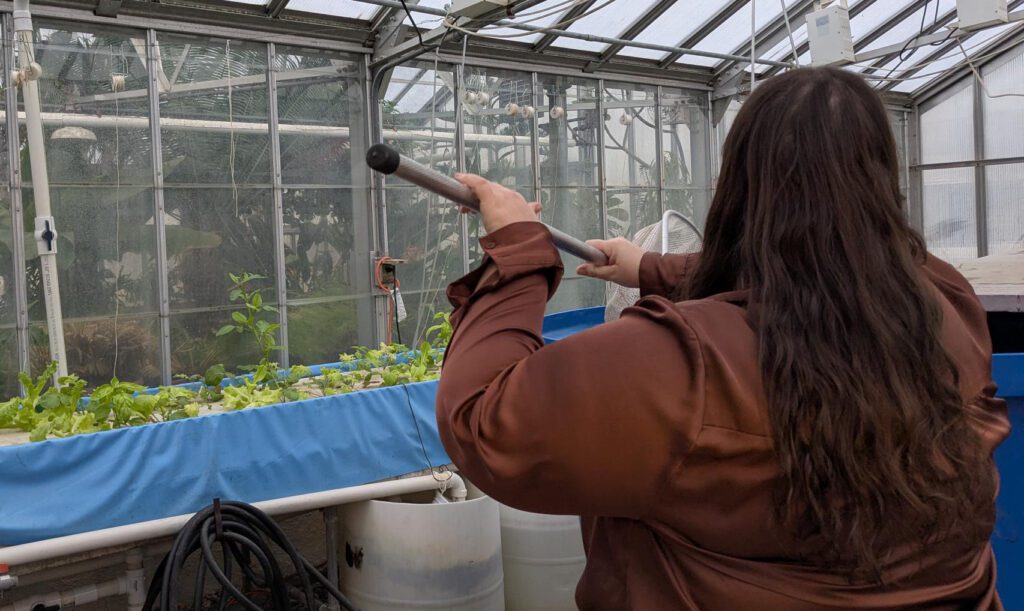
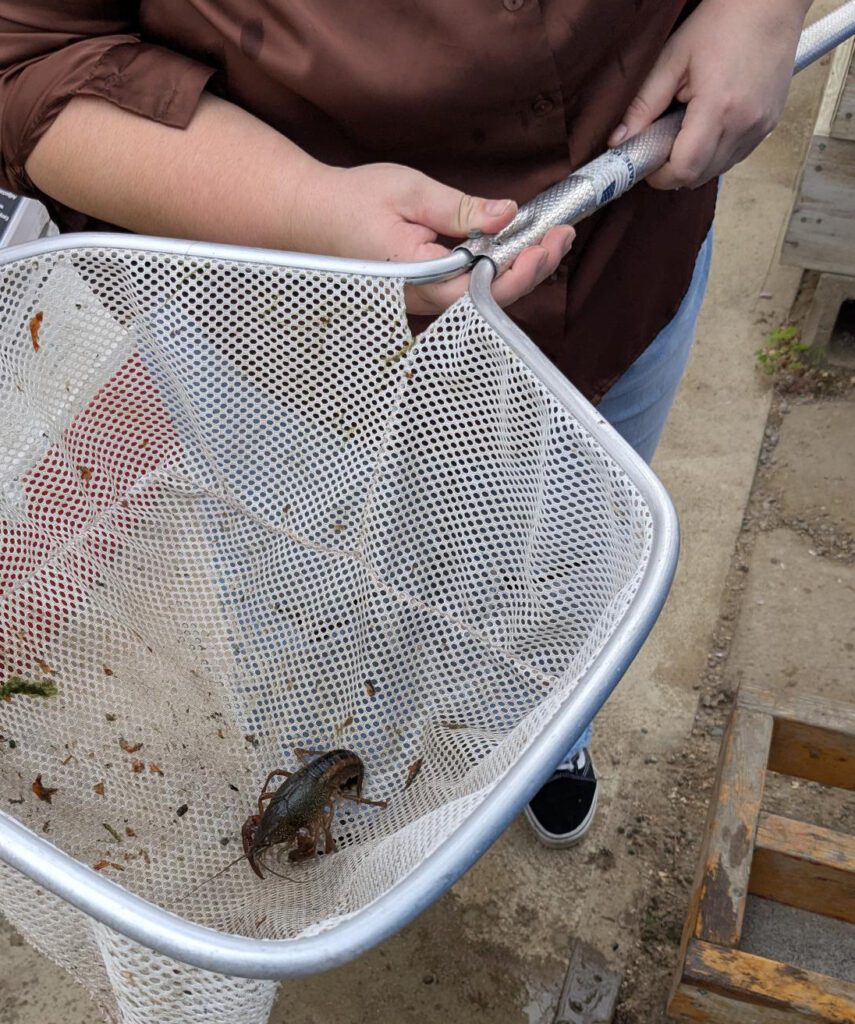
Byrge hopes in the future she will be able to get enough business to produce on a larger scale and to adapt the size and shape of the substrates so they will be more compatible with various aquaponics systems.
While she now lives in Cincinnati, Byrge continues to make substrates while working as the director of communication at The Aquaponics Association.
In terms of the industry’s future, Neves sees aquaponics continuing to grow.
“Shortages in wild-caught fish, a growing world population, even higher per capita fish consumption. We’re gonna need more sustainable sources of fish. And if you can piggyback the idea of growing the produce along with it, it’s gonna be sustainable, and I think that that’s going to be a shift in production in general,” Neves said.
Neves also said consumer acceptance of aquaponic-produced foods is increasing in the Midwest, which could help with the adoption of this system on a larger scale.
“Signs point to the fact that people want produce and fish that are local, that are sustainable, that are healthy, but also taste good, and we’re showing that these things are possible.”
